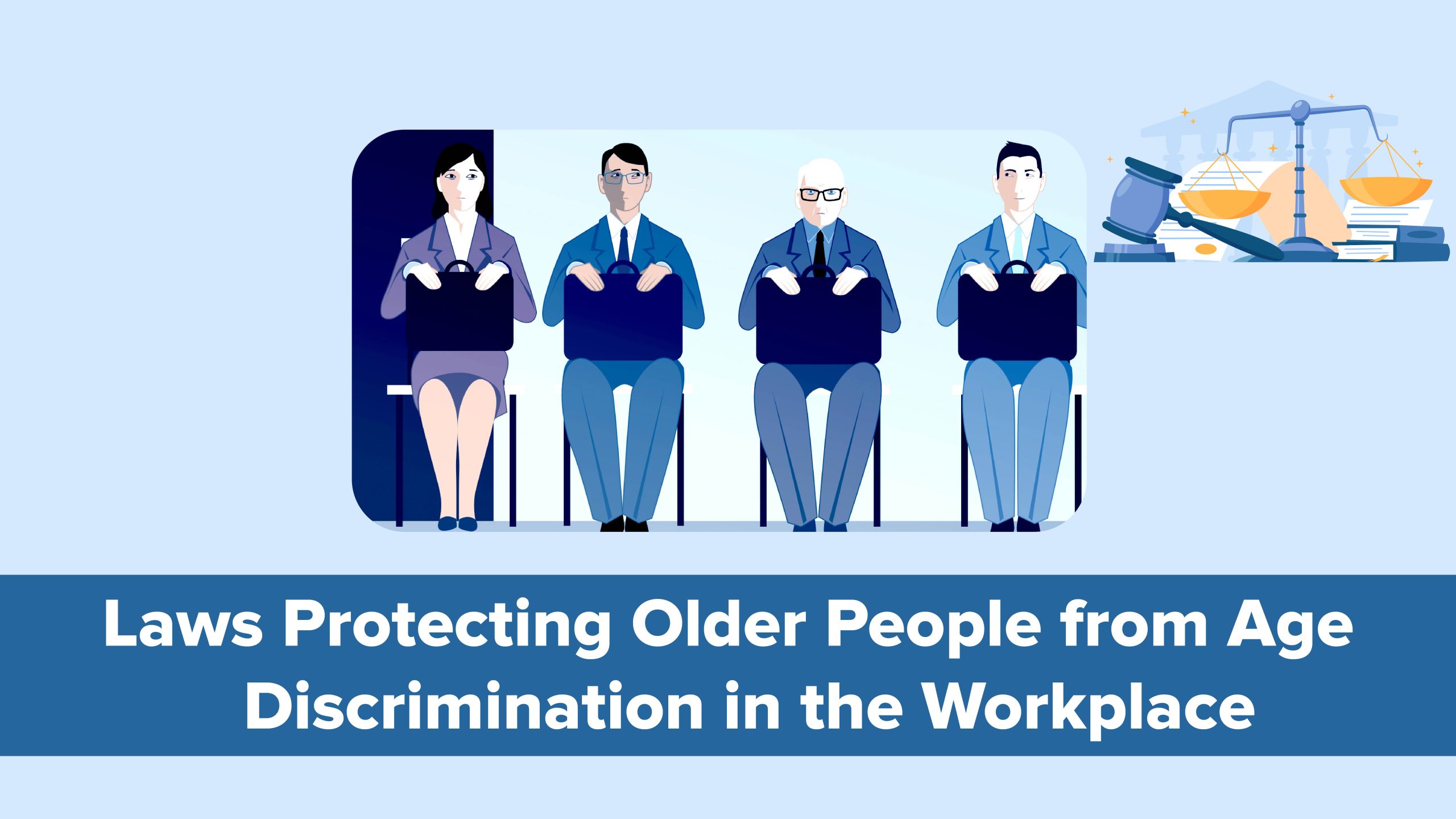
Discrimination in general exists in the workplace. Whether we want to accept the reality or not. And, employment discrimination is a very common phenomenon in the workplace. Age discrimination in the workplace negatively impacts both employees and companies. Over the past 15 years, 20-25% of all cases handled by the Equal Employment Opportunity Commission (EEOC) have involved age discrimination, often resulting in the highest settlement amounts, such as $93.9 million in 2013 alone. Ageism is not just unfair to older employees; it is also bad for business. Companies risk large financial settlements and miss out on hiring from a large pool of talented older workers. Additionally, they lose out on the significant contributions that older employees can make to the organization.
What is Age Discrimination?
Age discrimination refers to treating someone unfavourably because of their age. This type of discrimination can occur in various aspects of employment, including hiring, firing, promotions, pay, job assignments, training opportunities, and benefits. In the context of employment law, age discrimination typically involves treating an applicant or employee less favourably because they are age 40 or older. This discrimination can manifest in overt actions, such as refusing to hire or promote someone based on their age, or in more subtle ways, such as creating policies or practices that disproportionately disadvantage older workers. Age `discrimination is prohibited by laws such as the Age Discrimination in Employment Act (ADEA) also known as the “Age Discrimination Act” in the United States, which aims to protect workers from unfair treatment based on age.
Age Discrimination in Employment Act of 1967 (ADEA)/ Age Discrimination Act
The ADEA which we will refer to sometimes as age discrimination act protects employees above age 40 and older from age discrimination in the workplace. The Age Discrimination in Employment Act of 1967 (ADEA) protects individuals who are 40 years of age or older from employment discrimination based on age. Under the ADEA it is unlawful to discriminate against any individual age 40 or older because of their age concerning any term, condition, or privilege of employment, including but not limited to, recruitment, hiring, firing, promotion, layoff, compensation, benefits, job assignments, and training. The ADEA permits federal agencies to Favor older workers based on age, even when doing so adversely affects a younger worker who is 40 years of age or older. Age Discrimination Act,
Key Provisions of the Age Discrimination in Employment Act/Age Discrimination Act
The Act includes various stipulations:
- Prohibition of Age Preferences: Job notices or advertisements must not specify age preferences, limitations, or specifications.
- Apprenticeship Programs: Age limitations in apprenticeship programs are generally prohibited.
- Age-related inquiries: While the ADEA does not necessarily prohibit an employer from asking an applicant’s age or date of birth, such inquiries will be closely scrutinized to make sure they are for lawful purposes.
- Employee Benefits: It also ensures that benefits provided to older workers are commensurate with those received by younger workers, although some exceptions exist.
Other Relevant Legislation
- Older Workers Benefit Protection Act (OWBPA): Amended the ADEA to specifically protect older employees’ benefits and ensure they are not discriminated against in terms of benefits provided.
- State Laws: Many states have their own laws that provide additional protections against age discrimination, often extending protections to younger workers as well.
Types of Age Discrimination
Hiring Practices
- Age Bias in Job Postings: Use of terms like “young,” “energetic,” or “recent graduates” that discourage older applicants.
- Interviews and Recruitment: Discriminatory questions about age or retirement plans and biases in hiring decisions.
Workplace Treatment
- Harassment and Stereotyping: Negative comments, jokes, or exclusion based on age.
- Differential Treatment: Unequal workloads, responsibilities, or recognition compared to younger employees.
Promotions and Advancement
- Barriers to Promotion: Older workers are often overlooked for promotions in Favor of younger employees.
- Training Opportunities: Less access to professional development or training programs.
Termination and Layoffs
- Disproportionate Impact: Older workers are more likely to be targeted in layoffs or forced retirements.
- Buyouts: Pressure to accept early retirement packages.
Impact on Workers
Economic Consequences
- Wage Gaps: Older workers may face stagnant wages or lower pay compared to younger counterparts.
- Unemployment Duration: Longer periods of unemployment for older workers.
- Retirement Security: Impact on pension and retirement savings due to job loss or underemployment.
Health and Wellbeing
- Mental Health: Increased stress, anxiety, and depression due to discrimination and job insecurity.
- Overall Well-Being: Lower self-esteem and sense of worth impacting overall quality of life.
Advocacy and Support Resources
AARP (American Association of Retired Persons)
- Mission: AARP is dedicated to empowering Americans aged 50 and older to choose how they live as they age.
- Services and Resources:
- Job Board: AARP offers a job board specifically for older workers, connecting them with age-friendly employers.
- Work and Jobs Resource Centre: Provides resources for job searching, career advice, and skill-building.
- Legal Advocacy: AARP Legal Counsel for the Elderly provides free legal services to older adults in need, including those facing age discrimination.
- Work Reimagined: An initiative that includes job listings, career advice, and employer information to help older workers find meaningful employment.
- Webinars and Workshops: Offers online and in-person events on various topics related to employment, retirement, and financial planning.
National Council on Aging (NCOA)
- Mission: The NCOA is a nonprofit organization that works to improve the lives of millions of older adults, especially those who are vulnerable and disadvantaged.
- Services and Resources:
- Job Training Programs: The Senior Community Service Employment Program (SCSEP) helps low-income, unemployed older adults gain work experience and job training.
- Economic Security Initiative: Provides resources and tools to help older adults achieve financial stability.
- Benefits Enrollment: Assistance in finding and enrolling in benefits programs that can provide financial support.
- Advocacy: NCOA advocates for policies that improve the economic security and health of older adults.
- Workshops and Educational Programs: Offers educational programs on health, job skills, and financial planning.
Filing Complaints
EEOC Process (Equal Employment Opportunity Commission)
- Overview: The EEOC enforces federal laws prohibiting employment discrimination, including the Age Discrimination in Employment Act (ADEA).
- Steps to File a Complaint:
- Initial Contact: Contact the EEOC to discuss your situation and determine if your issue falls under their jurisdiction. This can be done via phone, online, or in person at an EEOC office.
- Filing a Charge: If the EEOC determines that your case qualifies, you will file a formal charge of discrimination. This can be done in person, by mail, or online through the EEOC Public Portal.
- Investigation: The EEOC will notify the employer and investigate the charge. This may involve interviews, document reviews, and site visits.
- Mediation: The EEOC may offer mediation as an option to resolve the issue quickly and amicably. Both parties must agree to mediation.
- Resolution or Lawsuit: If the EEOC finds evidence of discrimination, it will attempt to settle the charge. If the settlement fails, the EEOC may file a lawsuit on your behalf, or it will issue a Notice of Right to Sue, allowing you to file a lawsuit independently.
State Agencies
- Overview: In addition to the EEOC, many states have their own agencies that enforce state-specific anti-discrimination laws. These agencies often work in cooperation with the EEOC.
- Examples of State Agencies:
- California Department of Fair Employment and Housing (DFEH): Enforces California’s civil rights laws, including those against age discrimination.
- New York State Division of Human Rights (DHR): Protects individuals from discrimination in various areas, including employment, based on age.
- Massachusetts Commission Against Discrimination (MCAD): Enforces state anti-discrimination laws and provides avenues for filing complaints.
Steps to File a Complaint with State Agencies:
- Initial Contact: Reach out to the state agency to discuss your case. This can be done by phone, online, or in person.
- Filing a Complaint: Submit a formal complaint. Some states allow filing online, while others require mail or in-person submissions.
- Investigation: The agency will investigate the complaint, which may involve requesting documents, interviewing witnesses, and examining workplace practices.
- Conciliation and Mediation: State agencies often offer conciliation or mediation services to resolve disputes without formal legal action.
- Hearing and Resolution: If the issue is not resolved through mediation, the agency may hold a hearing. Based on the findings, the agency can order remedies or refer the case to court for further action.
How Diversification at the Workplace helps in Reducing the number of Age Discrimination
Boosted Innovation: The benefits of diversity in the workplace bring a rich mix of experiences, perspectives, and approaches, creating an environment ripe for innovative ideas. The variety of skills across different age groups enhances creative problem-solving, helping companies stay agile and innovative.
Expanded Talent Pool: Companies that embrace age diversity attract a broader range of candidates, giving them access to a more extensive talent pool. This expanded pipeline can streamline the hiring process, making it faster, easier, and more cost-effective.
Reduced Skills Gap: With many industries facing a skills gap, teams that blend younger and older employees can balance out these deficiencies. Experienced workers pass on their knowledge, while younger team members bring new perspectives and familiarity with emerging technologies.
Increased Productivity: Research shows that employees in their 40s are often at their peak productivity. As younger workers are still developing their skills and older workers bring seasoned expertise, companies with a mix of age groups can benefit from enhanced productivity levels.
Enhanced Resilience: Different generations have faced unique challenges—Gen X during the Great Recession and Gen Z amid the pandemic. Age-diverse teams are better equipped to handle unexpected and varied challenges due to their diverse experiences.
Natural Mentorship: Benefits of diversity in the workplace encourages organic mentor-mentee relationships. Older employees can share their expertise and engage meaningfully, while younger employees gain valuable guidance and learn through example.
Improved Customer Insight: A workforce with varied ages can better understand and cater to diverse customer demographics. This alignment between staff and market demographics enhances the company’s ability to meet customer needs effectively. Additionally, having different types (different colors, ages, and nationality, genders) of people in the workplace helps
Enhanced Reputation: A strong commitment to age diversity can boost a company’s reputation as an inclusive and fair employer. This positive perception not only helps with public image but also attracts top talent, as diversity becomes increasingly important to job seekers.
Conclusion
In conclusion, age discrimination in the United States poses significant challenges for older workers, impacting their economic security and well-being. Legal protections like the ADEA and support from organizations such as AARP and NCOA are crucial in combating this issue. Employers must adopt inclusive practices, and older workers should be aware of their rights and the processes for filing complaints with the EEOC and state agencies. Through collective efforts, we can promote a more equitable and inclusive workplace for all ages.



